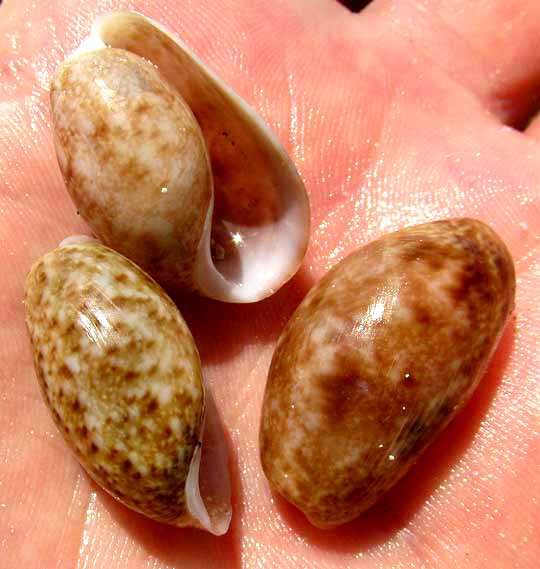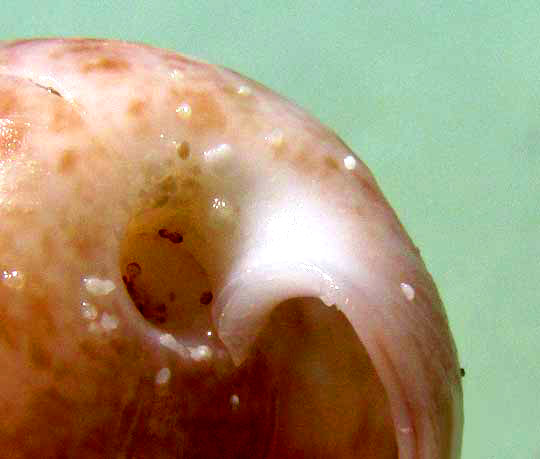Excerpts from Jim Conrad's
Naturalist Newsletter
from the March 29, 2015 Newsletter issued from Río Lagartos, on the Yucatan Peninsula's northern coast (~N21.60°, ~W88.16°), Yucatán state, MÉXICO
COMMON WEST INDIAN BUBBLE
Across the estuary from Río Lagartos, at low tide on the wet, sandy beach on the Gulf of Mexico, you can pick up lots of shiny, brown-speckled, inch-long (27mm) snail-like gastropod shells like those shown below:

The shells aren't formed into conspicuous whorls the way we think of snail shells as being, but they whorl a little, as you can see in a close-up of a shell's "closed end" shown below:

Volunteer identifier Bea in Ontario with her new Peterson sea-shell field-guide didn't have much trouble pegging these shells as Common West Indian Bubble, BULLA OCCIDENTALIS. This species turns up on beaches of the Gulf of Mexico, Caribbean and eastern South America.
I read that species in the genus Bulla are mostly nocturnal, and often are seen grazing among sea grasses, feeding mainly on green algae. They bury themselves in mud when the tide is out.